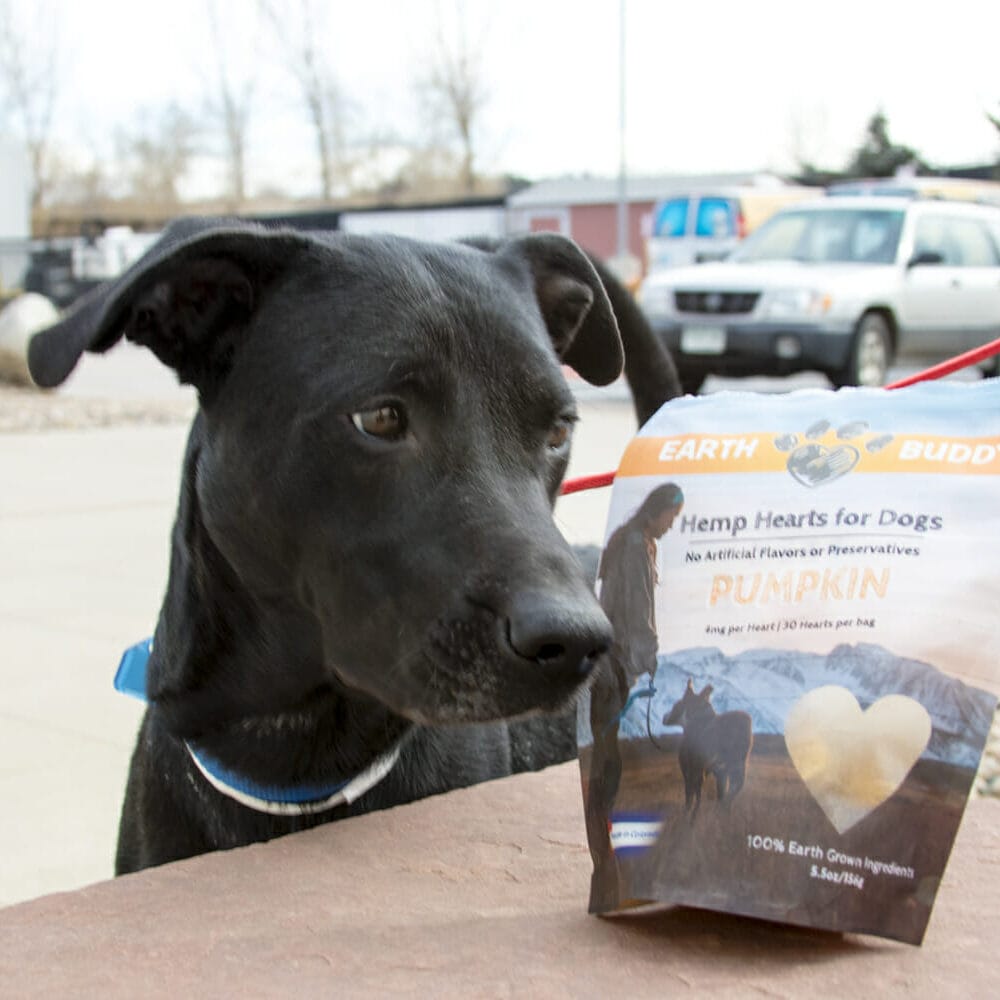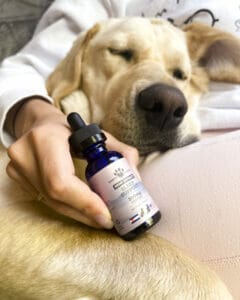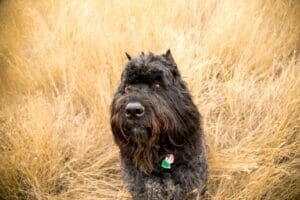Blog | CBD Oil Blog | Dogs
What If Your Dog Hates Car Rides?
July 10, 2023
Written By: Earth Buddy Team

Car rides can be an exciting experience for many dogs, their tails wagging at the mere mention of a “ride.” However, not all dogs share this enthusiasm. For some, car rides cause fear, transforming a simple trip to the park into a stressful ordeal. If your furry companion falls into the latter category, don’t fret. Here’s a handy guide on what to do if your dog hates car rides and how you can help make the journey more enjoyable.
1. Why Your Dog Hates Car Rides
The first step is identifying why your dog dislikes car rides. Every dog is different and may have a different reason for not preferring to go on rides. Potential reasons include:
- Motion sickness: Just like humans, dogs can also experience motion sickness or car sickness, which can make car rides an unpleasant experience. This is especially common in puppies and young dogs, whose inner ear structures aren’t fully developed. This structure manages balance in dogs. If this is the case, you may notice excessive lip licking along with other common signs of discomfort.
- Different vehicle: If you’re traveling in a different vehicle than normal, even if your dog is still in the back seat, this could result in them not enjoying the car ride. Some dogs are fine in all vehicles, whereas other dogs don’t respond well to change.
- Past negative experiences: If the dog’s experiences with car rides have primarily been associated with negative outcomes like visits to the vet, being left at a boarding facility, or long, uncomfortable trips, they might develop a dislike for car rides.
- Stress or fear: Some dogs may feel stressed due to the unfamiliar sights, sounds, and sensations associated with car rides. The confinement within the vehicle can also trigger fear in some dogs. You may also notice lip licking behavior as a coping mechanism.
- Lack of acclimatization: If the dog hasn’t been properly acclimatized to car rides from a young age, they might find the experience stressful and unsettling.
- Car safety: Some dogs may feel uncomfortable if they’re not securely restrained in the car. The lack of stability and safety can cause distress and make them hate car rides.
- Physical discomfort: Dogs with joint problems or old age might find getting in and out of the car or the vibrations during the ride uncomfortable, contributing to a dislike of car rides.
- Separation stress: Dogs with separation stress might associate car rides with being left alone or abandoned, causing them to dislike the car.
2. Create Positive Associations if Your Dog Hates Car Rides
Creating positive associations with car rides is an effective strategy for helping dogs overcome their fear or dislike of the experience. Positive association training exercises may take time, but they’re effective.
Start by making the car a positive space even when it’s not moving. Allow your dog to explore the car and reward them with treats or praise for getting in. Gradually acclimate them to the idea of being in the car with short, non-threatening sessions that end in positive experiences, like a walk or playtime.
Then, start taking short trips, gradually increasing the length as your dog becomes more comfortable. Ensure each ride ends with something your dog enjoys, such as a walk in the park, a game, or a special treat. Consider bringing along their favorite toys or blanket to provide a sense of familiarity and comfort. If your dog gets stressed, using calming sprays or pheromone diffusers can also be beneficial. Over time, your dog can start to associate car rides with these positive experiences, reducing their stress and fear.
3. Use Comfort Items Even for Adult Dogs
The scent of a beloved item can have a calming effect and provide a distraction from the stress-inducing aspects of the ride. The following items can be helpful:
- Familiar blankets or bedding: Bringing along your dog’s favorite blanket or bedding can help create a familiar and comforting environment in the car.
- Favorite toys: A favorite toy can provide a distraction and a sense of comfort during the car ride.
- Chew toys or Calming treats: A long-lasting chew toy or calming treat can help keep your dog occupied and relaxed during the journey.
- Comforting clothing: Body wraps or calming shirts, which apply gentle, constant pressure, can help reduce stress in some dogs.
- Pheromone diffusers or sprays: These products release calming dog pheromones that can help reduce stress and fear.
- Full-spectrum hemp extract: Full-spectrum CBD for dogs can promote a sense of relaxation and calmness by giving to them 30-45 minutes prior to your travels.
- Soft music or sounds: Some dogs may find soft, calming music or nature sounds soothing during car rides.
- Travel crates: If your dog feels secure in their crate, using a well-ventilated and properly secured crate can provide a safe space during the ride.
- Car seat covers or hammocks: These can provide a more secure and comfortable surface, preventing your dog from slipping around during the ride.
Remember, every dog is unique, so it may take some trial and error to find the comfort items that work best for your pet. Always ensure your dog’s safety during car rides by using a well-fitted harness or crate.
4. Implement Car Safety Measures
Ensuring car safety is a crucial aspect of making your dog feel more comfortable during car rides. Proper restraint systems, such as dog seat belts, harnesses, or travel crates, can provide a sense of security for your pet, reducing anxiety and fear. These measures can prevent your dog from moving around too much in the vehicle, reducing the risk of motion sickness and injury in case of a sudden stop or accident.
Car seat covers or hammocks can also add an extra layer of comfort and stability, preventing your dog from slipping. Always ensure that the crate, harness, or seat belt is the correct size for your dog and is properly secured. Additionally, never leave your dog alone in a car, especially in extreme weather conditions, as this can cause serious health risks. By implementing these safety measures, you can create a more secure and comfortable environment for your dog, helping them feel safer and more at ease during car rides.
5. Practice Calm Behavior to Reduce Travel Stress
Your dog is highly attuned to your emotions and will often reflect your behavior and emotional state. If you’re fearful or stressed, your dog is likely to pick up on these feelings and react similarly. On the other hand, if you’re calm and relaxed, your dog is more likely to stay calm as well. This principle is especially important during potentially stressful situations like car rides. Maintaining a calm demeanor can help reassure your dog that there’s no reason to be fearful or anxious.
Speak to your dog in a soft, soothing voice and offer gentle, reassuring touches. Avoid showing frustration or impatience if your dog is fearful, as this could heighten their stress. Instead, show them through your calm and composed behavior that car rides can be a normal, non-threatening experience. Over time, your calm presence can significantly help dogs maintain a normal and relaxed disposition and reduce their fear of car rides.
6. Take Regular Breaks on Long Journeys
Taking regular breaks on long car journeys or road trips can greatly help reduce your dog’s travel stress. Even if you’re going to fun destinations, dogs can become restless and uncomfortable when confined in a car for extended periods. Breaks allow them an opportunity to stretch their legs, relieve themselves, get some fresh air, and expend some energy at a dog park or somewhere fun. During these breaks, make sure to provide your dog with plenty of water to keep them hydrated.
Some light play or a short walk can also help distract them from their travel fear. Simply walking can have a calming effect on nerves. These breaks can also help to interrupt the constant motion of the car, potentially reducing the likelihood of motion sickness in susceptible dogs. By incorporating regular breaks into long car journeys, you can make the ride more manageable and less stressful for your dog.
7. Visit the Veterinarian’s Office to Find Out Why Your Dog Hates Car Rides
If your dog’s fear of car rides persists despite your best efforts, it may be time to seek help from a professional. First, schedule some vet visits. During these visits, your vet can provide advice and determine if an underlying medical condition is causing discomfort. Once the vet clears your dog of medical conditions, you can then approach a behavior professional. A certified animal behaviorist or dog trainer can provide customized strategies to help your dog overcome their fear of car rides.
Be Patient with Your Pup
Remember that patience is key when helping your dog overcome their fear of car rides. With time, consistency, and lots of love, even the most car-wary dog can learn to tolerate – and maybe even enjoy – the ride. With these strategies in your toolbox, you’ll be well-equipped to turn car rides into a tail-wagging experience for your canine companion. Safe travels!
For further reading, we recommend:
You Might Also Enjoy
Your dog’s skin is their largest organ making dog skin care a crucial part of…
Like us, our dogs, and other mammalian species, cats have an endocannabinoid system. This system…
Learning how to calm a dog down is an essential skill to have in your…








